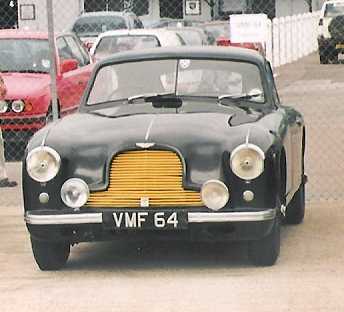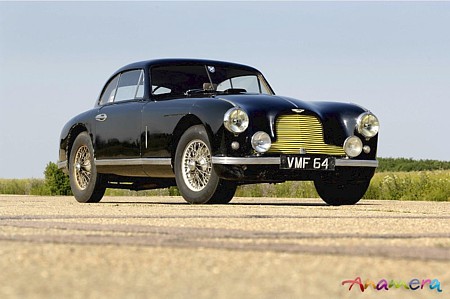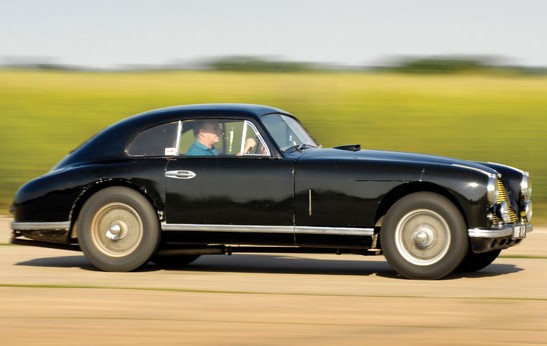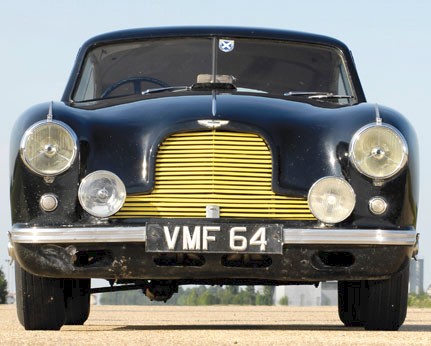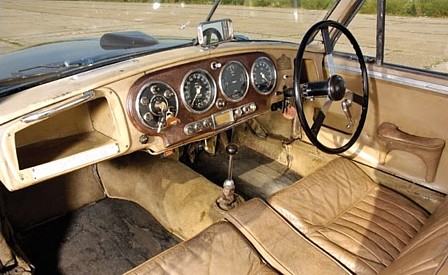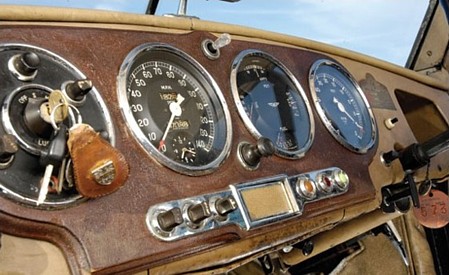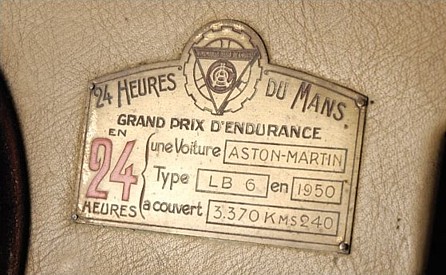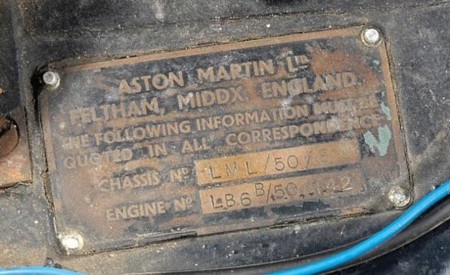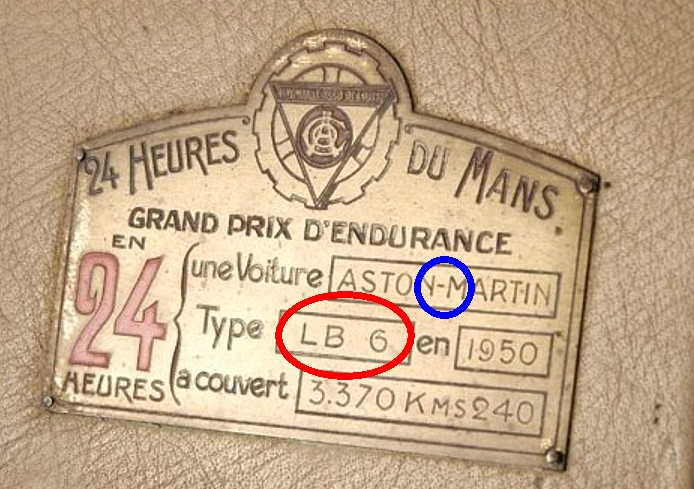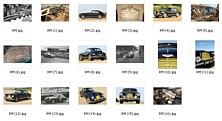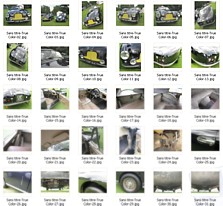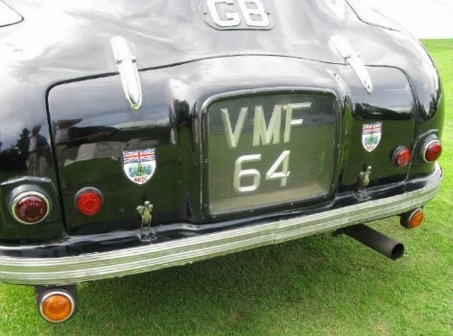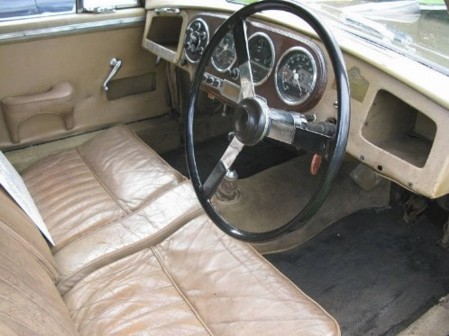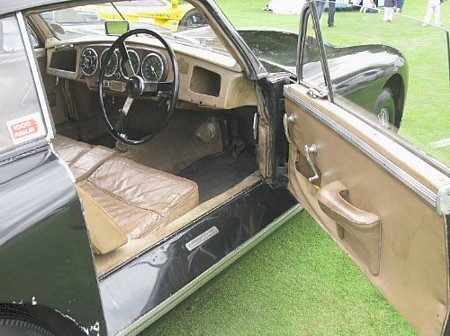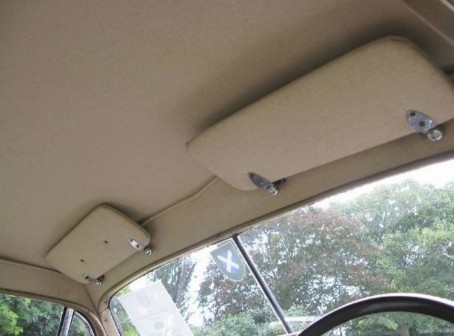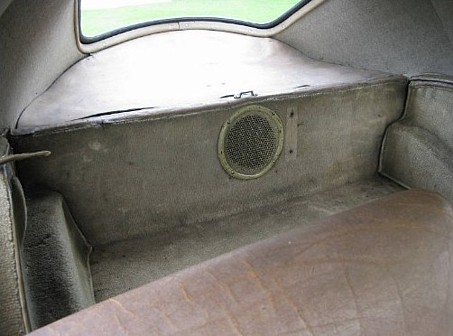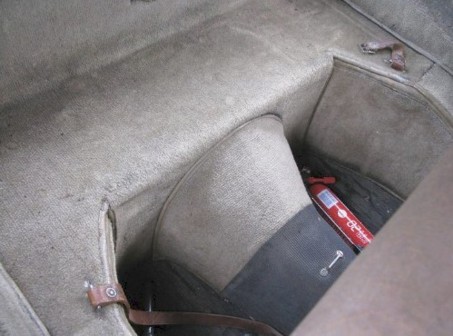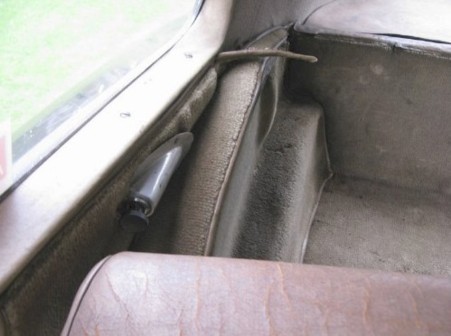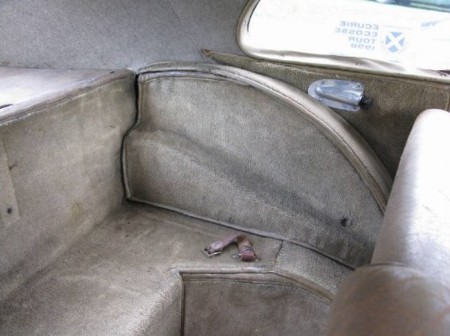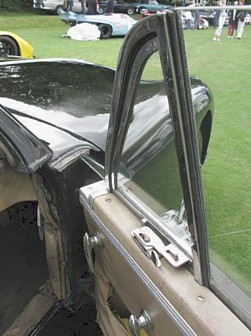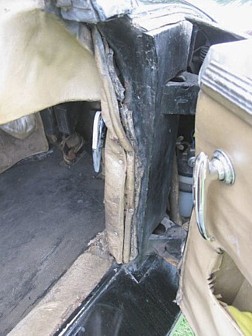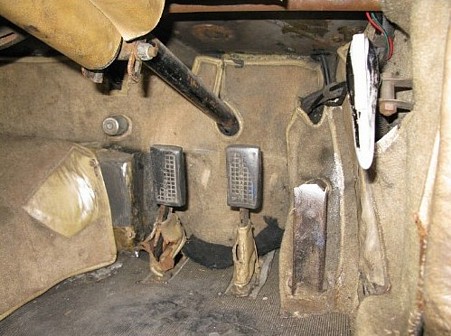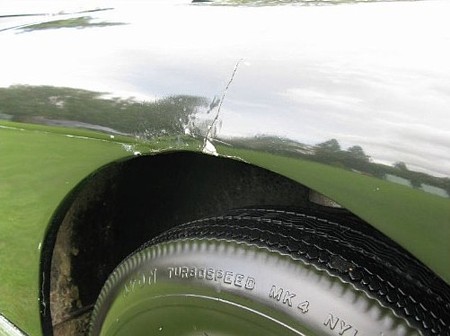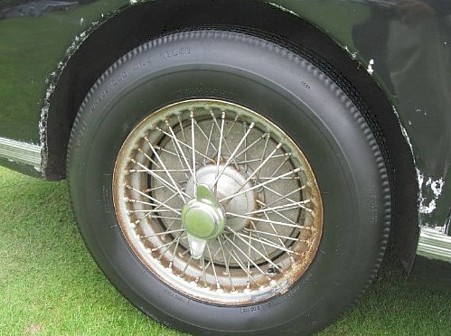THE WASHBOARD REGISTER
ASTON MARTIN DB2
LML/50/8 (VMF 64)
PLEASE DO NOT HESITATE
TO SEND
CONTRIBUTIONS !
WORKS TEAM CAR.
CHECK THIS PAGE FOR THE FOUR DIFFERENT BODY STYLES.
Engine number: LB6B/50/142
No body number.
Cadillac green paint and rust interior.

(Source: FRO)
1950 : Le Mans (Abecassis / Macklin), 5th overall, 87.3 mph, 1st on
Index and in class

First body style (Source: POST)

(Source: BRITLM)
1950 : Silverstone B.R.D.C. (Sommer), 2nd in class, 79.9 mph
Second body style (Source
AM Magazine vol 20 no 82)

Photo sent by Dom.
1950 : Ulster T.T. (Macklin), 3rd in class, 71.8 mph
Shelsley Walsh
(Brackenbury), 6th in class, team prize
1951 : Mille Miglia (Wisdom /
Hume), 11th overall, 1st in class, 68.79 mph
This was not really a works entry.
For Le Mans 1951, a team of three
new cars was intended. It would be
one new DB3 and two lightweight DB2s and not three lightweight DB2s as
sometimes told. Aston Martin already knew they needed something more
competitive that would have been conceived as a racing car from the
start.
When John Wyer started to study the DB2, he was horrified. For
example, DB2s were raced with stock seats, each of them bringing 40 lbs
(18 kg) each!
For the new works DB2s, weight savings were necessary: all windows
(except screen) were made of Plexiglas, body was
devoid
of any chrome, 18-gauge alloy was used instead of 16-gauge (11,53 mm
thick instead of 14,43 mm). The chassis was drilled (this brought 32
lbs, ie
15 kg saving). All of this gave 450 lbs (204 kg) less.
Both DP47 /
lightweight DB2s registered XMC 76 and XMC 77 (chassis number LML/50/50
and LML/50/55) were on their way to completion but for the third car,
which was to be the first DB3, it was becoming evident it would not be
ready.
So decision was made to call back "old" VMF 64, which was at this
time
David Brown's personal car. It was detuned, having received a low
compression engine.
The DP47 cars had that drilled chassis and thin body that could not be
done on VMF
64 because of a lack of time.
VMF 64 "only" got a stripped interior but received the more powerful
engine that could produce up to 140 bhp with Webers.
That was not really a problem because it has been said that the DP47s
suffered from a little lack of stability at high speed.
1951 : Le Mans (Macklin / Thompson), 3rd overall, 90.0 mph, 1st in
class, 4th on Index
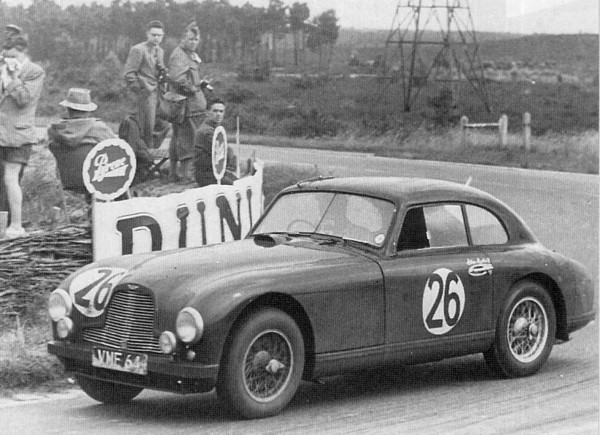 (Source: POST)
(Source: POST)
Road
Impressions, Autocar, July
20th
1952 : Mille Miglia (Wisdom / Lown), 12th, 1st in class, 71.8 mph
Alpine Rally
(Wisdom / Nockolds), 15th, 5th in class
Earls Court Show
Used in a February advert for "the David Brown companies" (and not
directly for Aston Martin!).
(Source: 48-59)

Still third body style on this eBay photo...
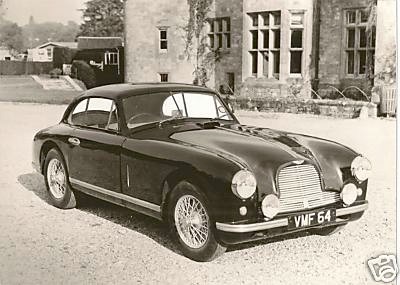 4th body style surely gained in 1953 or 1954. See there
4th body style surely gained in 1953 or 1954. See there.
1955 T.O.S.C. Autocar,
January 7th
Silverstone c.1964 (thanks DB2Hawaii for this fantastic photo)
On this super shot full of atmosphere, from left to right: TLR 628 is
AM300/1157 (DB2/4 MkII), RLT 789 is LML/1001 (DB2/4 DHC), 148 MMC is
LML/501 (DB2/4), LUY 800 is LML/50/400 (DB2 DHC), VMF 64 is LML/50/8
(DB2)
After this, VMF 64 continued competing in historic events.
As seen at Silverstone in 2001:
All the DB2 works cars were there:
(Thanks José for this
photo)
Seen at Salon Privé in
2009:
Aston Martin Scrapbook
http://astonuts.free.fr
BACK

